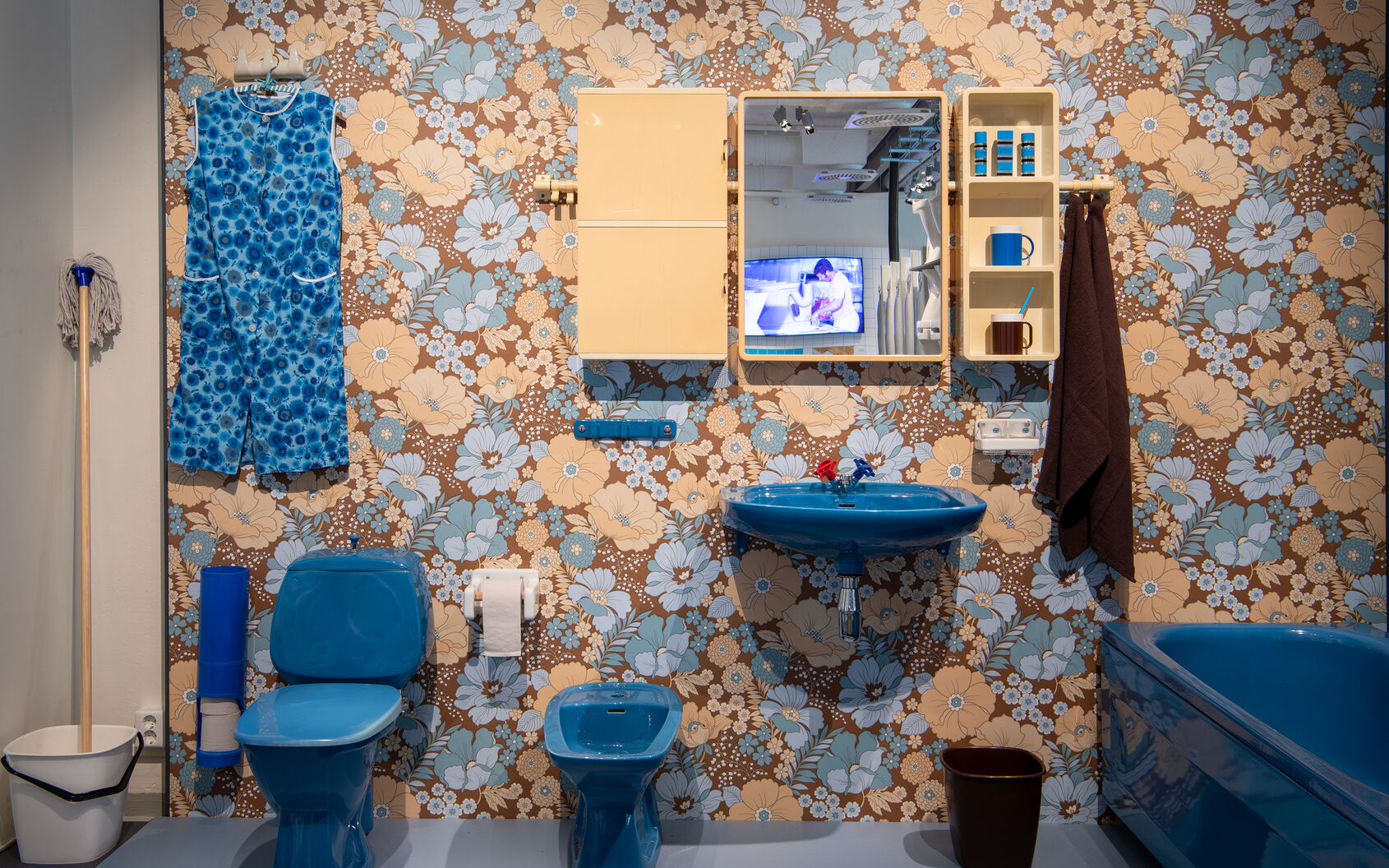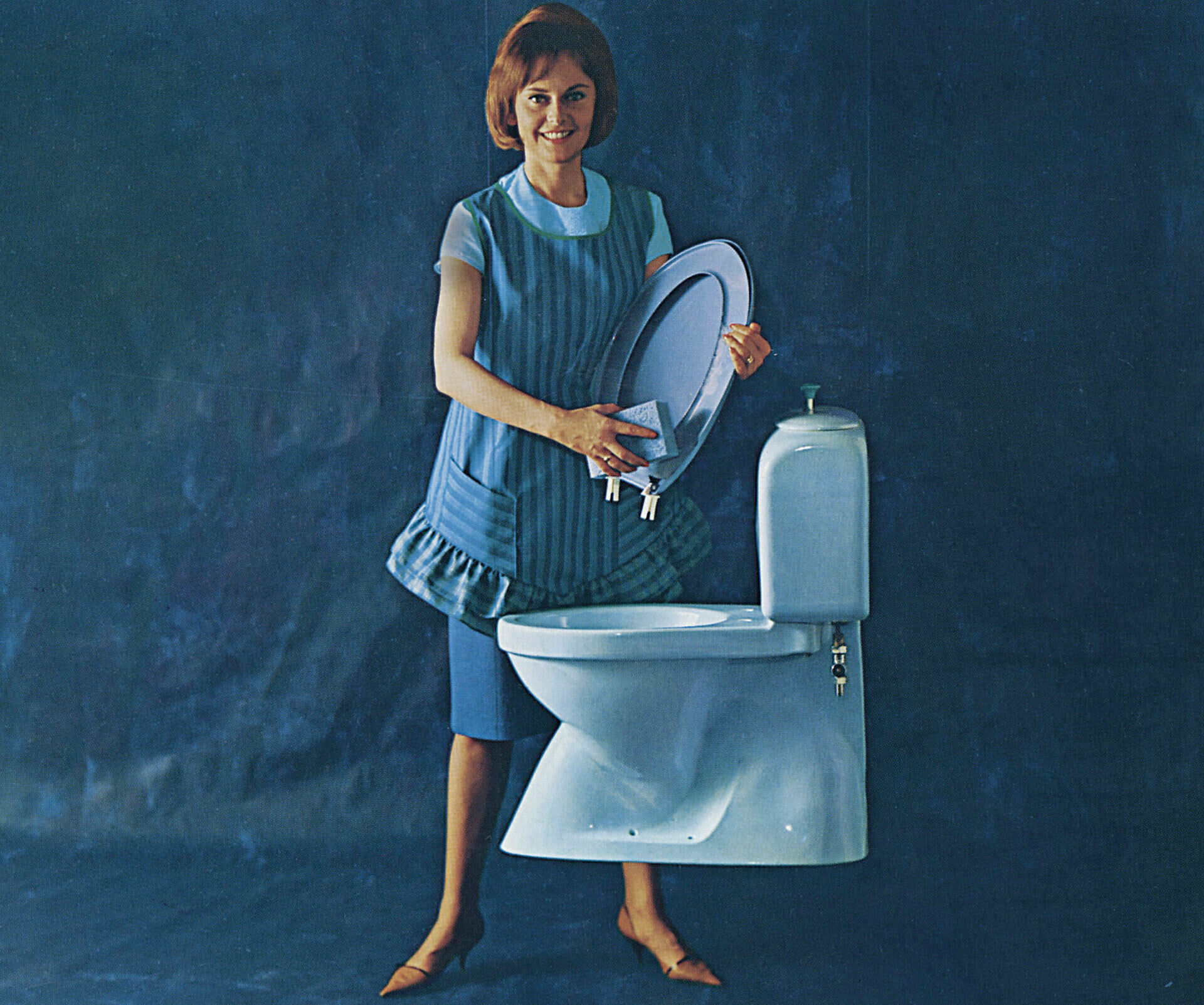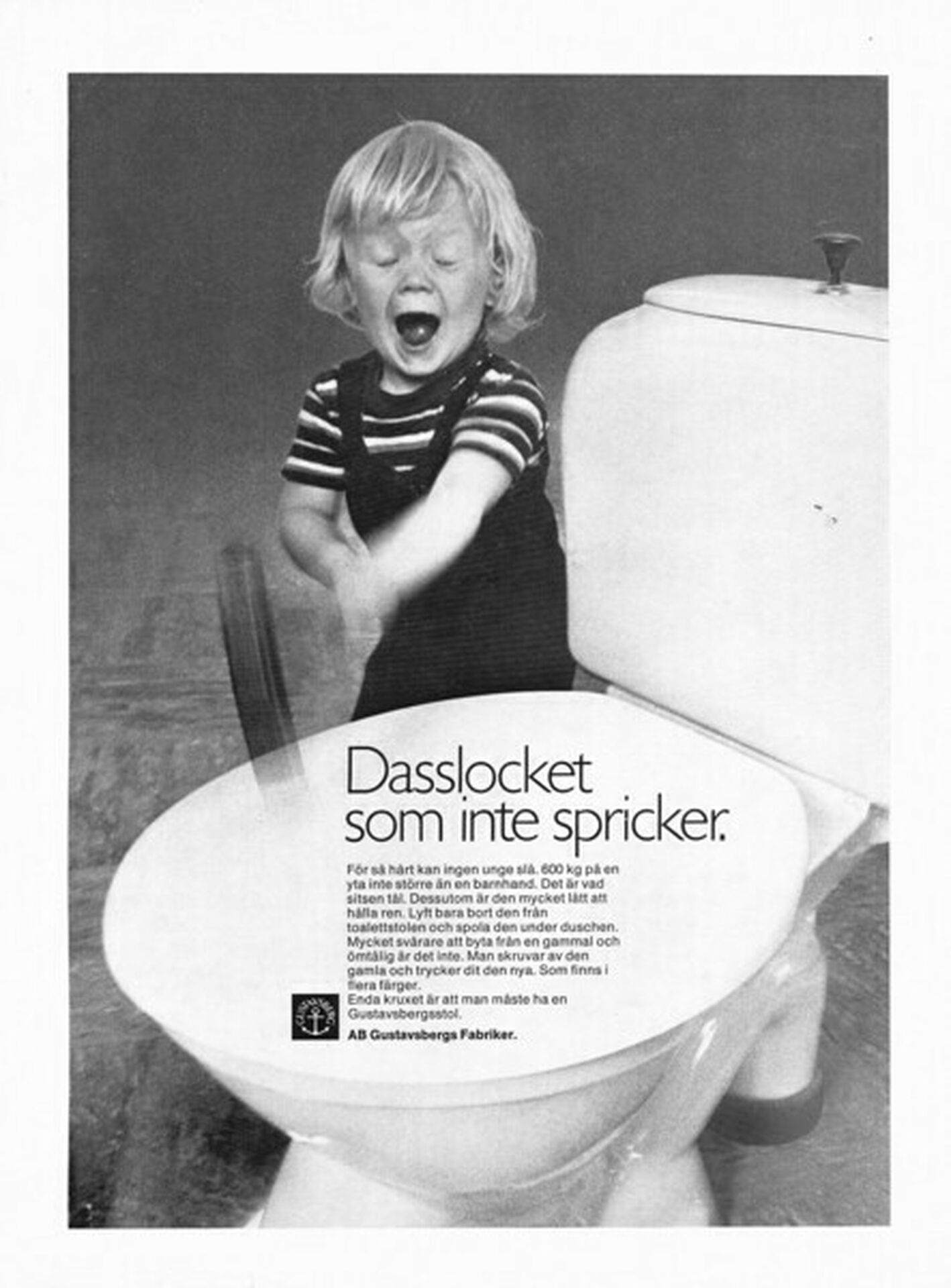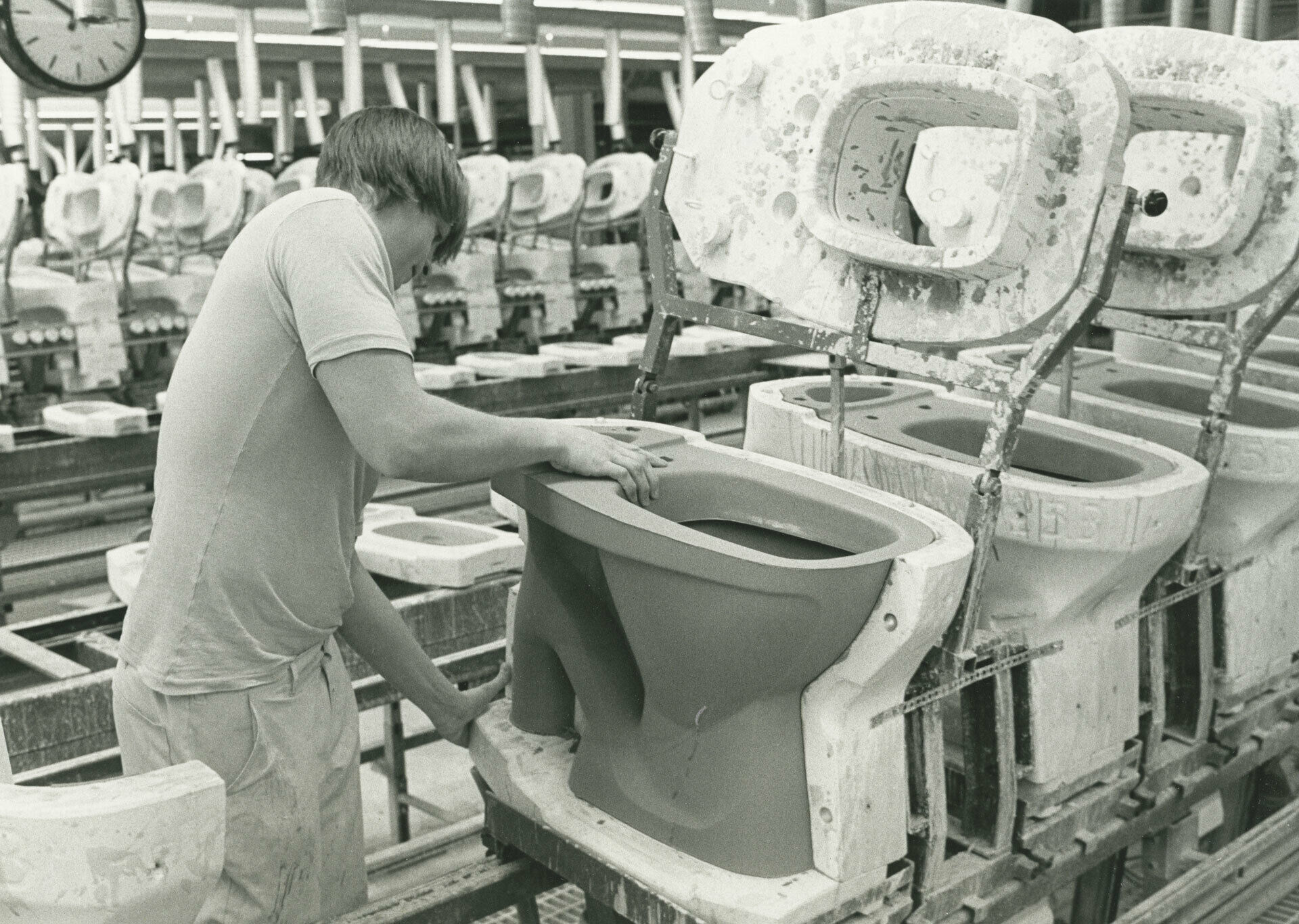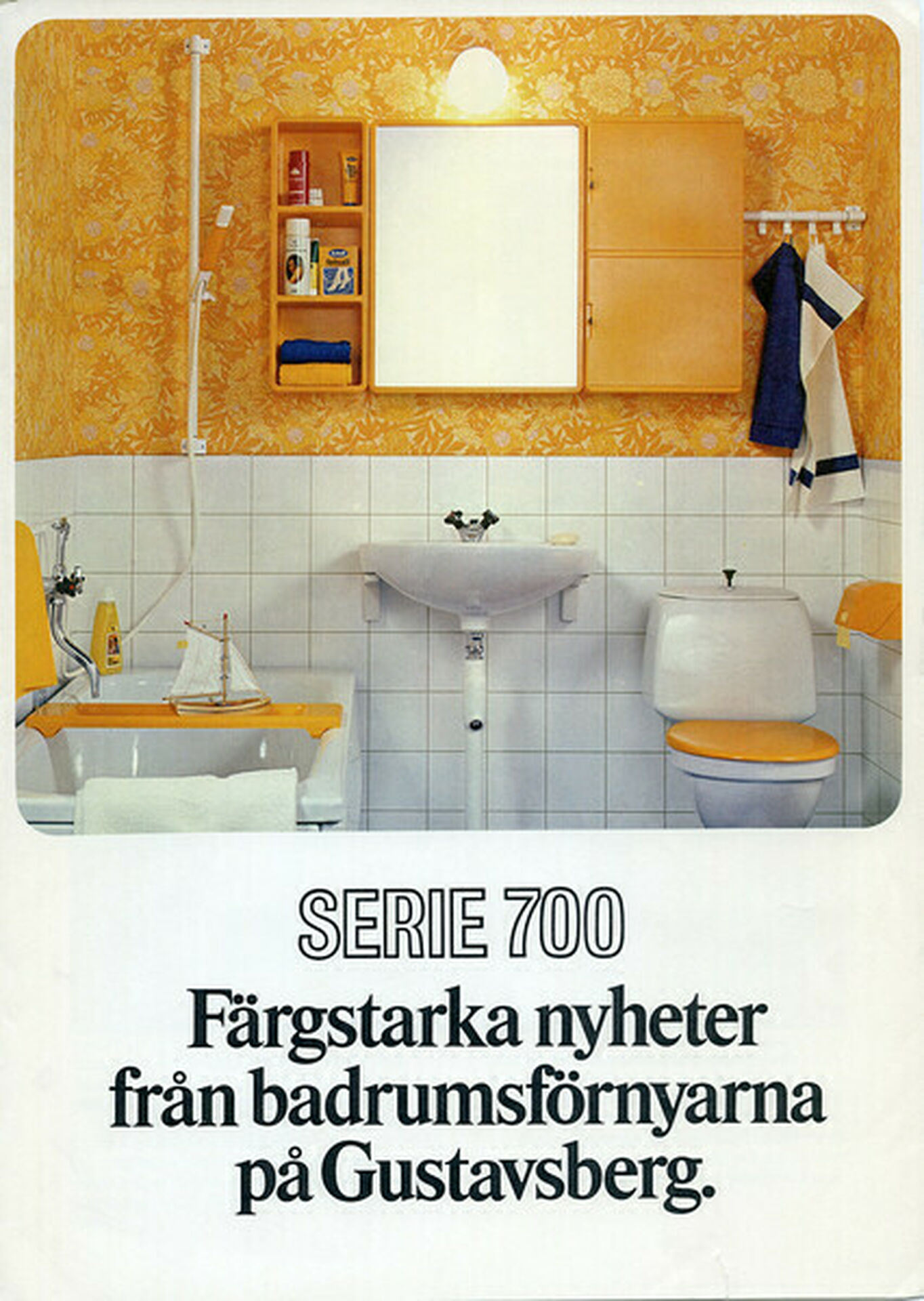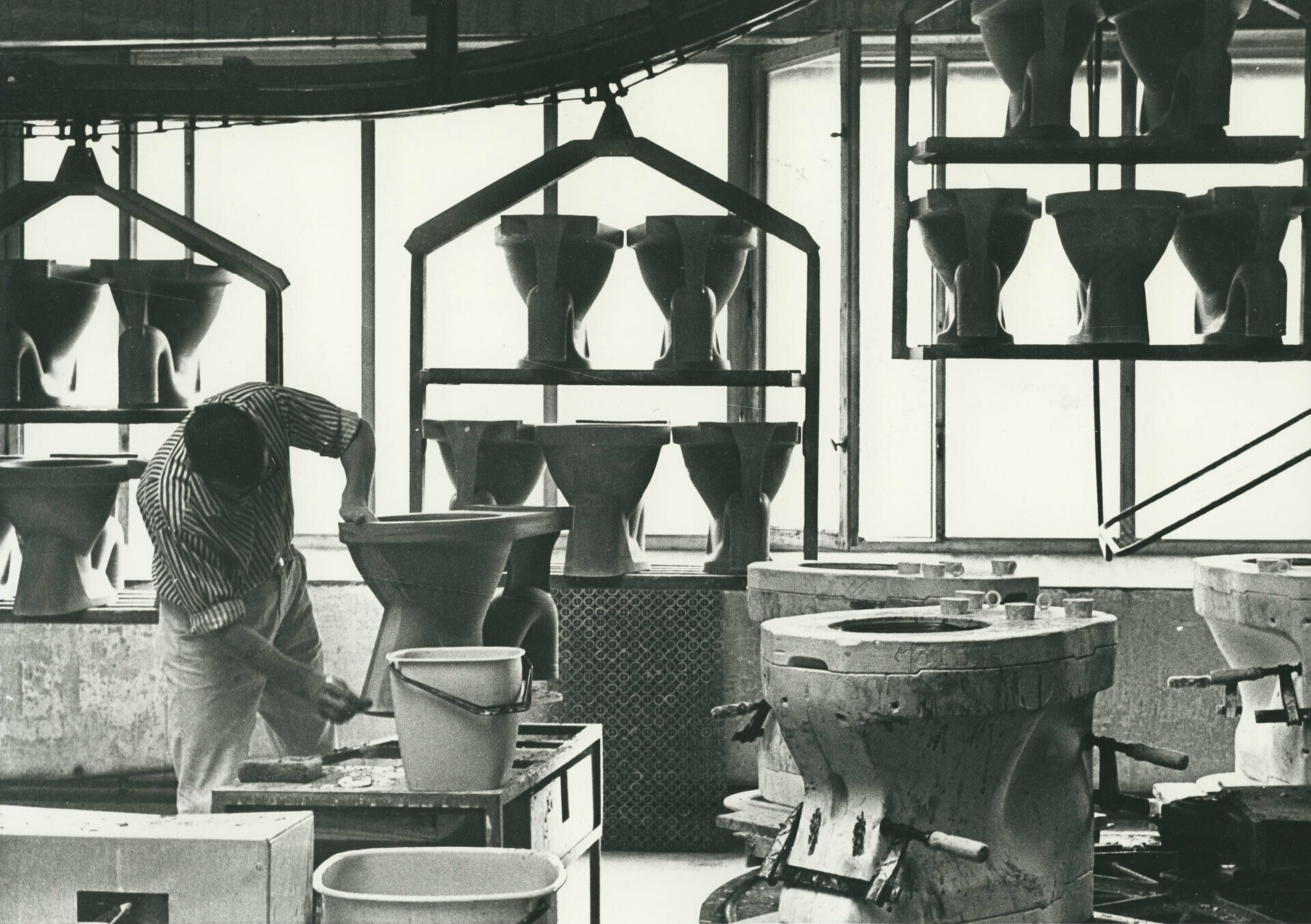The exhibition Bathrooms for everyone! took you through the history of bathrooms, from the privy to an obvious clean and fresh feature in our homes. You could follow the bathroom development during the 20th century and get a glimpse into the design process in one of the Nordic countries' most prominent porcelain factories.
Today the bathroom is an obvious feature in our homes. It is a room for beauty care, hygiene, well-being and often an indicator of financial status in our selection of material and interior design. It is also the place where we have alone time, behind a locked door. However, it was not until the 1950's that the bathroom became standard in Swedish homes. Before that, Sweden was relatively dirty and underdeveloped when it came to room solutions for sanitation and hygiene, a million miles away from the typically Scandinavian brightness, cleanliness and freshness. So how then did we go from being "Filthy Sweden" to designed bathrooms for everyone?
In an exhibition from Gustavsberg Porcelain Museum, the history of the bathroom was highlighted through the collection and generous loans. We were to follow the development through the 20th century and the growth of industrial design in one of the Nordic countries' most prominent porcelain factories with the anchor stamp as its trademark - all gathered in one room.
Porcelain has been manufactured on site since 1825. When the Swedish Cooperative Union (KF), purchased Gustavsberg's porcelain factory in 1937, it marked the modernisation of the factory. In addition to household porcelain and decorative objects, the production of sanitation porcelain commenced. Ten years later, form-pressed steel bathtubs are the result of a unique partnership between the American automotive industry, and objects manufactured from moulded plastic also became part of the production.
The Swedish Cooperative Union was an important actor in the construction of the people's home and the Swedish welfare system. The goal was to make home functional, bright, hygienic and available to everyone. Equipping households with toilets and sinks was an important step towards raising the standard of living in Sweden, which in the 1930's was one of the lowest in Europe. Sinks with running water, which had previously been a luxury for only a lucky few, became the standard for everyone.
The exhibition provided a look at the steps in the design process from idea to realisation, where ergonomics and knowledge of material are key components. Through advertisements from the past, often with a humours twist, news and trends are also presented, in blue as well as brown, orange and white.
